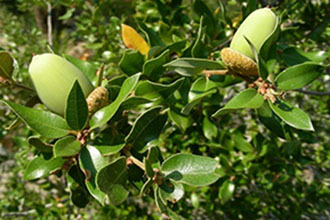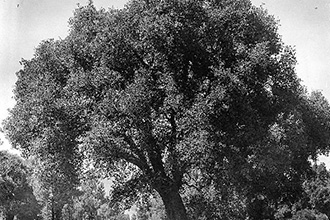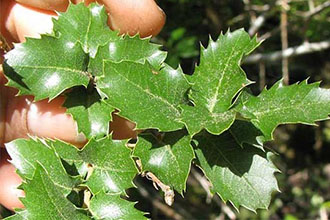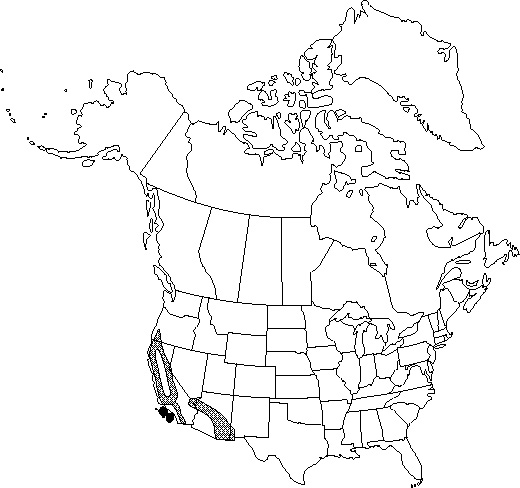Taxonomy: Kingdom - Plantae (plants). Subkingdom - Tracheobionta (vascular plants). Superdivision - Spermatophyta (seed plants). Division - Magnoliophyta (flowering plants). Class - Magnoliopsida (dicotyledons). Subclass - Hamamelididae.
Order - Fagales. Family - Fagaceae (beech) Genus - Quercus L. (oak). Species - Quercus chrysolepis Liebm. (canyon live oak).
Ecology: Canyon live oak is one of the most morphologically variable oaks in North America. It is a spreading, perennial, sclerophyllous evergreen that ranges from less than 5-30 m tall and up to 3.3 m DBH. Its growth form varies depending on the site. It grows as a shrub and may form dense thickets on mountain slopes and ridgetops, and it grows as a tree in sheltered, moist canyons. Its size generally increases with soil depth. In open areas the crown is dense, wide-spreading, and reaches nearly to the ground... Canyon live oak is a thin-barked tree for its size. The bark is smooth to flaky. Canyon live oak has a deep and extensive root system. Road cuts have exposed roots up to 7.3 m deep.



